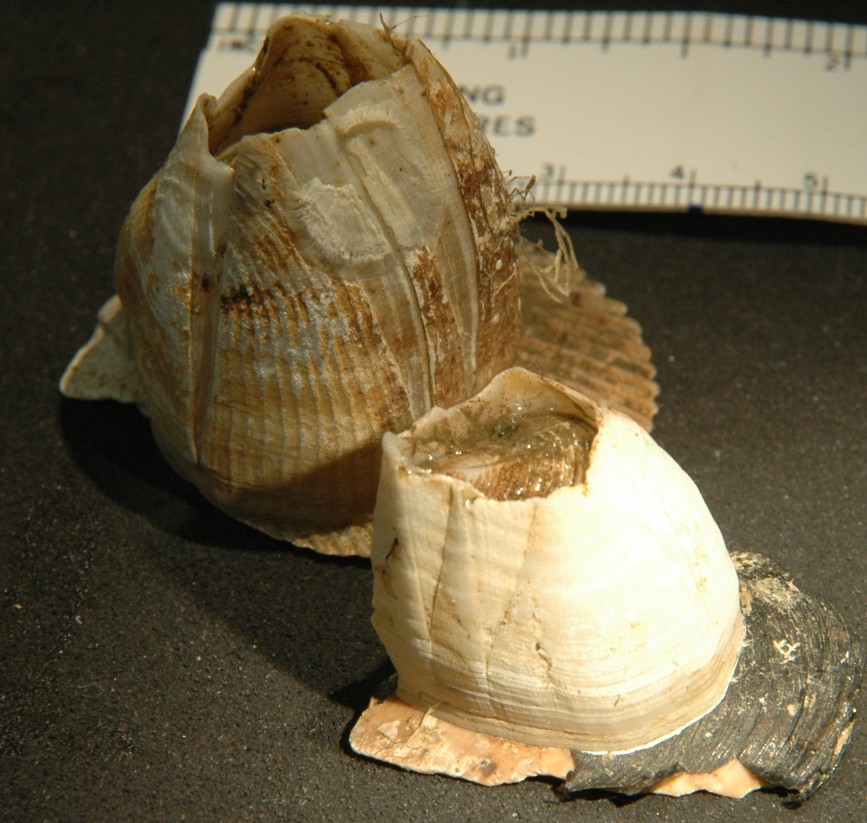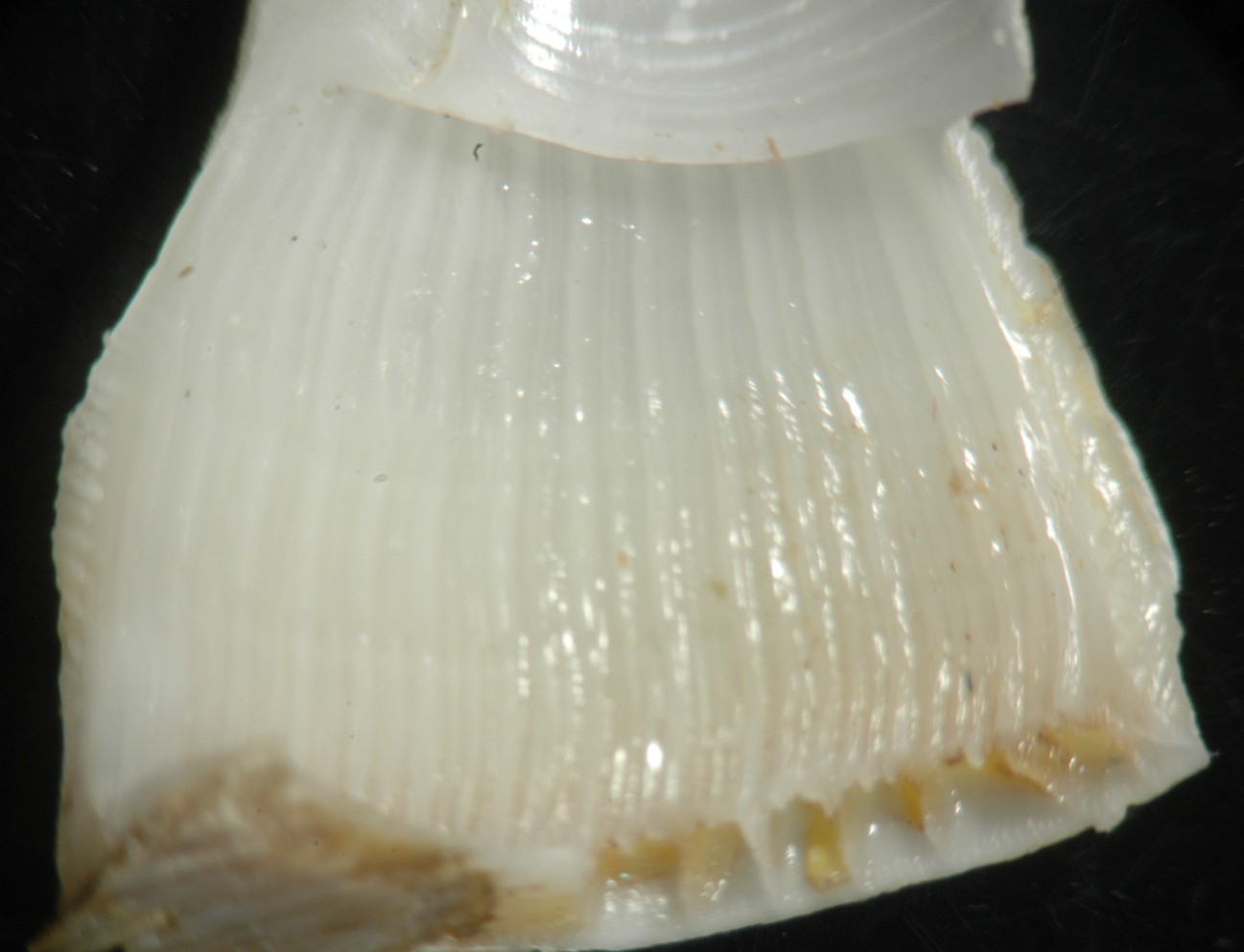Balanus rostratus Hoek, 1883Common name(s): |
|
| Synonyms: |  |
| Phylum Arthropoda
Subphylum Crustacea Class Maxillipoda Subclass Thecostraca Infraclass Cirripedia Superorder Thoracica Order Sessilia Suborder Balanomorpha Superfamily Balanoidea Family Balanidae |
|
| Balanus rostratus from about 100 m depth, San Juan Channel, WA | |
| (Photo by: Dave Cowles, July 2006) | |
How to Distinguish from Similar Species: Balanus balanus has septae in the tubes of the wall plates. Balanus nubilus grows much larger, usually has heavily eroded plates, has longer beaks, and appears bright orange-yellow when it opens. Semibalanus cariosus has thatchlike projections on the outside of the plates. Balanus crenatus looks superficially similar but has no beaks.
Geographical Range: (At least along our Pacific Coast and off Japan)
Depth Range: (In my experience this barnacle is found mainly quite deep)--below normal SCUBA depths.
Habitat:
Biology/Natural History:
Fatty acid
composition indicates that small individuals eat mainly detritus while
larger individuals feed mainly on diatoms.
| Return to: | |||
| Main Page | Alphabetic Index | Systematic Index | Glossary |
References:
Dichotomous Keys:Kozloff 1987, 1996
General References:
Scientific Articles:
Koji
Muramoto, Dong-Hao Jin, Yoko Niino, Kazue Fujiwara, Shizuya Kabuto,
Tomohisa
Ogawa, Michitoshi Toda, and Hisao Kamiya, 2001.
Comparison of
the amino acid sequences of acorn barnacle lectins showing different
inhibitory
activities toward the crystal growth of calcium carbonate.
Fisheries
Science 67:4 pp. 703-
Toropova FV, Chailakhian LM, Vereninov AA, 1972. Relative ionic permeability of the membrane of giant muscle fibers of Balanus balanus (L.) and Balanus rostratus (Hoek) for potassium, sodium and chlorine ions. Biofizika 17:1 pp. 63-69 (in Russian)
Zhukova, Natalia V., 2000. FATTY ACID COMPONENTS OF
TWO SPECIES
OF BARNACLES, HESPERIBALANUS HESPERIUS AND BALANUS
ROSTRATUS
(CIRRIPEDIA), AS INDICATORS OF FOOD SOURCES. Crustaceana 73:5
pp.
513-518
Web sites:
General Notes and Observations: Locations, abundances, unusual behaviors:

The joints where the plates overlap are shiny.

This is the scutum (left) and tergum (right) from an individual eaten
by a seastar. The tergum is beaked, as can be seen at top.

This is the view of the inside of the tergum (left) and scutum (right).

The wall plates are formed of hollow tubes, the openings of which are
visible at the bottom of this photo.
Longitudinal striations can be seen on the inside of the wall plates,
as seen here.
The base of the plates is at the bottom.
Authors and Editors of Page:
Dave Cowles (2006): Created original page